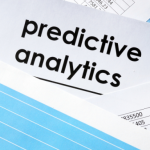Executive Summary
-
Big Data analytics is transforming risk management in the financial sector.
-
Predictive analytics helps financial institutions anticipate and mitigate risks.
-
By leveraging Big Data, companies can improve decision-making and enhance customer trust.
-
Challenges include data privacy concerns and the need for specialized skills.
-
Real-world applications demonstrate significant ROI through risk reduction.
Introduction
In today’s fast-paced financial landscape, managing risk is more critical than ever. Financial institutions are inundated with massive volumes of data, but many struggle to extract actionable insights. This is where Big Data and predictive analytics come into play. These technologies are not just buzzwords; they represent a strategic evolution in risk management.
As financial entities aim to forecast potential risks and make informed decisions, understanding how to leverage Big Data for predictive risk management becomes indispensable. This article will delve into how Big Data is reshaping the financial sector’s approach to risk, the benefits, challenges, and real-world applications of these technological advancements.
Definitions / Context
Big Data refers to large and complex data sets that traditional data-processing software cannot handle. In finance, Big Data encompasses transaction records, market data, social media inputs, and much more.
Predictive Risk Management involves using data analysis to forecast future risks and opportunities. By applying predictive models, financial institutions can identify potential threats and take preemptive actions.
Benefits / Pros
-
Improved Risk Forecasting: Predictive analytics enables firms to anticipate market shifts and adjust strategies accordingly.
-
Enhanced Decision-Making: Access to comprehensive data insights leads to more informed decisions, minimizing risk.
-
Customer Trust: By proactively managing risks, financial institutions can bolster customer confidence.
-
Cost Efficiency: Early risk detection helps prevent financial losses, reducing the need for costly interventions.
Risks / Cons / Challenges
-
Data Privacy Concerns: Handling vast amounts of sensitive data raises significant privacy issues.
-
Skill Shortage: There is a demand for skilled professionals who can interpret complex data sets.
-
Integration Difficulties: Merging Big Data solutions with existing systems can be technically challenging.
-
Regulatory Compliance: Financial regulations require careful navigation to avoid legal pitfalls.
Step-by-Step Process
Implementing Predictive Risk Management Using Big Data
-
Data Collection: Gather relevant data from various sources, ensuring compliance with privacy standards.
-
Data Integration: Use advanced tools to integrate data into a coherent system.
-
Model Development: Develop predictive models tailored to specific risk management needs.
-
Analysis and Monitoring: Continuously analyze data and adjust models to reflect current market conditions.
-
Decision Implementation: Apply insights from predictive analysis to real-world decision-making processes.
Consider a major global bank that recently used Big Data analytics to predict and prevent a potential credit risk crisis. By analyzing transaction patterns and market trends, the bank was able to adjust its credit policies proactively, avoiding significant financial losses and maintaining customer trust.
Expert Tips / Strategic Insights
-
Stay Updated: Regularly update predictive models to incorporate the latest data trends and insights.
-
Invest in Talent: Cultivate a team with cross-disciplinary expertise in data science and finance.
-
Prioritize Security: Ensure robust data security measures to protect sensitive information.
-
Leverage AI: Use artificial intelligence to enhance predictive accuracy and operational efficiency.
Tools / Resources / Calculators
-
Data Analytics Platforms: Consider platforms like SAS, IBM Watson, and Tableau for comprehensive data analysis.
-
Online Courses: Platforms like Coursera and edX offer courses on data science and predictive analytics in finance.
-
Financial Calculators: Utilize online financial calculators to simulate risk scenarios and outcomes.
Conclusion
Big Data and predictive analytics are revolutionizing risk management in the financial sector, offering unparalleled opportunities to forecast and mitigate risks effectively. By integrating these technologies, financial institutions can enhance decision-making, improve customer trust, and achieve substantial cost savings. As the industry evolves, staying abreast of these technological advancements is not just strategic but essential.


















